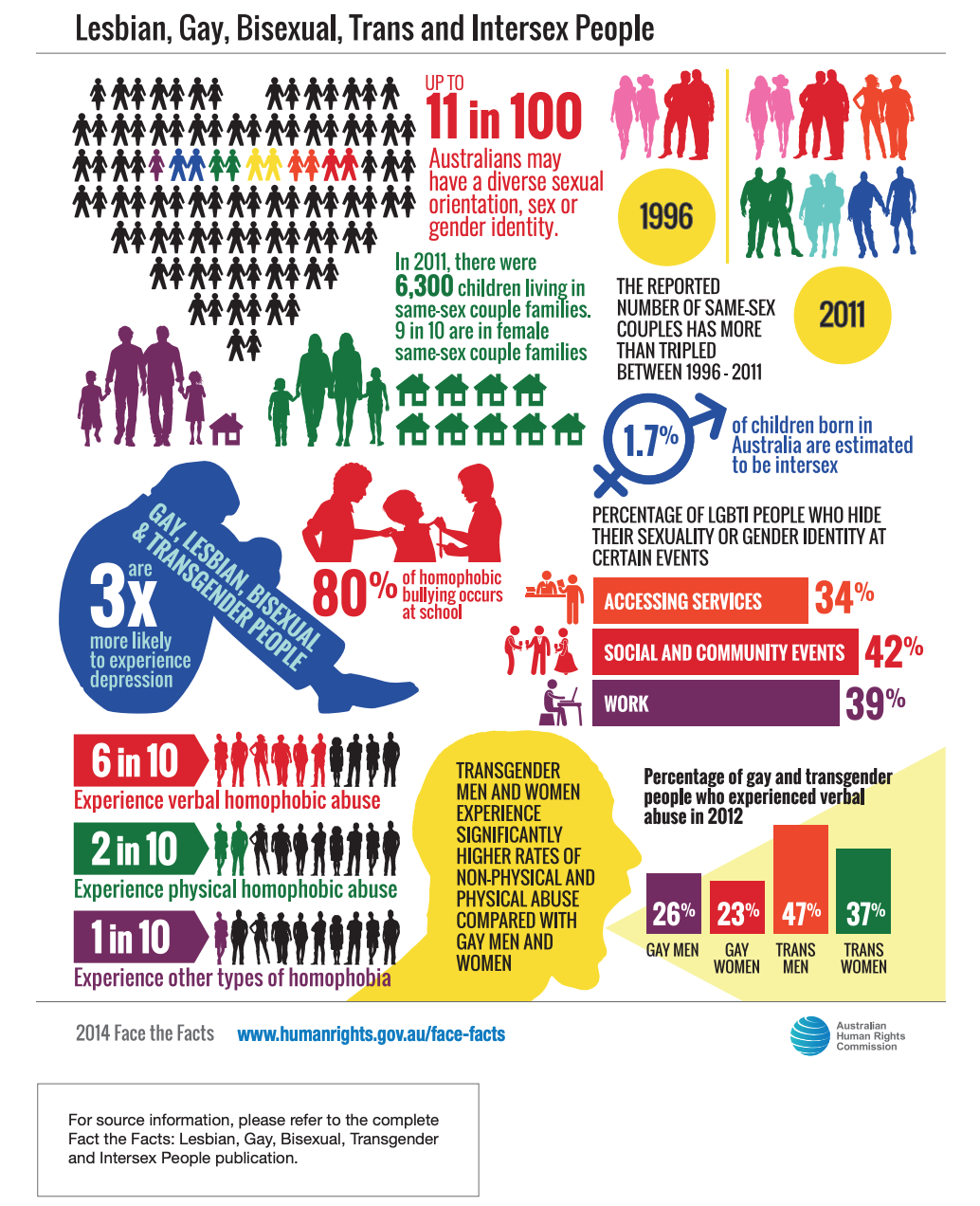What goes in (and is left out) of a census says a lot about a country
After an initial rejection, and then backflip over community pressure, Prime Minister Anthony Albanese has now acquiesced to two questions about sexuality and gender being included in the 2026 Australian census.
It’s been a long time coming, with Australian Bureau of Statistics (ABS) issuing a statement of regret in 2023, that validated the feelings of the LGBTQIA+ community who have historically been left out of the process. The statement acknowledged that the lack of of questions about gender identity, sexual characteristics or orientation “meant that they felt invisible and excluded”.
In the lead up to announcements around the next census to be launched in 2026, the ABS had warned assistant minister Andrew Leigh, who is responsible for the census, that there was a risk that dropping any proposed questions around sexuality and gender would “mean those feelings are repeated for the 2026 census”.
“The ABS expects a strong negative reaction from the LGBTIQ+ community and supportive members of the public. This could reduce the census response rate and quality of the data collected, and draw criticism of the ABS and government,” the submission said.
Despite senior ministers initially defending the governments decision to not include the proposed new questions as necessary to avoid “divisive” debates and to focus on the cost-of-living crisis, the government then backflipped after community pressure.
But why is this all so important?
Census data is collected all over the world by different countries, and serves a wide range of purposes, including playing a critical role in government policy, business planning, research, and more. In Australia the Australian Bureau of Statistics (ABS) conducts the census every five years to gather detailed information about the country’s population and households.
As put by Dr Andrew Burridge, a political and urban geographer who lectures in the Department of Geography and Planning at Macquarie University, “Nothing compares to the level of information and data that the Census can bring together. It gives a single snapshot of everyone who lives in Australia, what they do, where and how they live.”
“It’s always important to have a critical eye on the Census and ask: what is, and what isn’t being captured here? Who is being excluded – and how could this be detrimental to the provision of health and other services?”
In 2014 the Australian Human Rights Commission released a publication that purported that LGBTQIA+ people make up 11 in 100 Australians. An updated publication by Rainbow Health Victoria in 2020 stated, “In international and Australian research, 3–4% of the population have reported identifying as gay, lesbian or bisexual. This figure is higher among people younger than 25 in Australia — rising to 4% for male participants and around 7% for female.”

Here are the primary ways in which census data is used in Australia:
1. Government Funding and Resource Allocation
- Distribution of Government Funding: Census data informs how billions of dollars in federal, state, and local government funding is distributed. These funds are allocated to essential services like healthcare, education, infrastructure, and social services based on population size, demographics, and community needs.
- Targeting Services to Communities: Census data identifies areas with higher needs for public services, such as hospitals, schools, roads, and public transport. For example, areas with growing populations may need new schools or healthcare facilities, and census data helps prioritize these investments.
2. Electoral Representation and Redistricting
- Electoral Redistributions: Census data is used to determine the number of seats each state or territory gets in the federal Parliament’s House of Representatives. This process, called apportionment, ensures that representation is proportional to population size. States with growing populations can gain seats, while those with declining populations may lose seats.
- Redrawing Electoral Boundaries: At both the state and federal levels, census data helps redraw electoral boundaries to ensure each electorate has roughly the same number of voters. This process, known as redistricting, is vital for maintaining fair political representation.
3. Urban and Regional Planning
- City and Town Planning: Urban planners use census data to guide the development of infrastructure, housing, transport, and community services. Planners analyse population trends, such as migration patterns, to forecast future growth and ensure that cities and towns have the infrastructure they need to support that growth.
- Environmental and Land Use Planning: The census helps identify population pressures on natural resources and informs strategies for sustainable land use, water management, and environmental protection.
4. Healthcare Planning and Public Health Initiatives
- Health Services: Census data plays a significant role in planning healthcare services, including the location of hospitals, clinics, and specialised services. It helps assess the healthcare needs of different regions and populations, such as the elderly, children, or people with disabilities.
- Tracking Health and Well-being: Public health agencies use census data to track the distribution of health conditions and outcomes across populations, such as mental health trends or chronic diseases. This helps design targeted health campaigns and interventions, like vaccination drives or mental health services.
5. Education Planning
- School Locations and Resources: Census data informs decisions on where to build new schools and how to allocate resources to existing ones. Planners look at population density, birth rates, and family structures to forecast how many students will need school places in the coming years.
- Higher Education: Universities and technical colleges use census data to understand changes in education levels and to plan course offerings that meet future workforce demands.
6. Housing and Homelessness Services
- Housing Policy: Census data provides insights into housing conditions, home ownership rates, rental affordability, and overcrowding. This information helps governments design housing policies, including the provision of affordable housing and addressing homelessness.
- Tracking Homelessness: The Australian census includes a count of people experiencing homelessness, which helps the government and non-profit organizations assess the scale of the issue and direct resources toward housing assistance programs.
7. Labor Market and Employment
- Workforce Planning: Census data offers detailed insights into employment trends, industry growth, unemployment, and workforce participation rates. This helps both governments and businesses understand labor market dynamics and plan for future workforce needs.
- Targeting Employment Programs: The data informs the development of employment programs and services, such as job training and retraining initiatives for industries that are declining or transitioning, and where unemployment rates are high.
8. Social and Demographic Research
- Understanding Population Changes: Demographers and social researchers use census data to study changes in population structure, such as aging, migration, family composition, and fertility rates. This research helps forecast long-term societal trends and informs government strategies to address these changes.
- Diversity and Inclusion: Census data provides insights into Australia’s multicultural population, including languages spoken, ethnic backgrounds, and religious affiliations. This information is vital for policies promoting cultural diversity, inclusion, and the provision of language services.
9. Business and Market Research
- Business Planning: Businesses use census data to make decisions about where to open new stores, offices, or production facilities. They analyse population demographics to identify market demand and consumer behaviour, helping them target their products and services more effectively.
- Labor Market Insights for Businesses: Employers use census data to understand regional employment trends, workforce qualifications, and labor availability, which helps them plan recruitment strategies and locate new operations.
10. Emergency Services and Disaster Response
- Disaster Planning and Recovery: Census data helps emergency services plan responses to natural disasters, such as floods, bushfires, and cyclones, by providing detailed information about where people live, the age of buildings, and infrastructure vulnerabilities.
- Targeting Disaster Relief: After a disaster, census data helps allocate resources for recovery efforts, including rebuilding infrastructure and providing housing or financial assistance to affected populations.
11. Civic Engagement and Voting Rights
- Enabling Voting Rights: Census data is used to ensure that voting systems and processes are fair and accessible to all populations, including Indigenous communities and remote areas.
- Indigenous Representation: The census also gathers detailed data on Indigenous populations, including language and culture, which is crucial for informing policies and services aimed at improving the health, education, and socio-economic conditions of Aboriginal and Torres Strait Islander communities.
12. Supporting Advocacy and Non-Governmental Organisations
- Data for Advocacy: Advocacy groups and non-governmental organisations (NGOs) use census data to support their work in addressing social inequalities, such as poverty, housing insecurity, or health disparities. They rely on census information to back up their claims and to secure funding or policy changes.
- Tracking Progress on Social Issues: Census data helps NGOs and advocacy groups monitor the progress of issues like gender equality, disability rights, and support for aging populations, allowing them to track whether government initiatives are making a positive impact.
Several countries have included or are beginning to include questions about sexual orientation and gender identity in their national censuses or large-scale national surveys. This marks an important step toward gaining a more comprehensive understanding of LGBTQIA+ populations. Here are some notable examples:
1. United Kingdom
- In the 2021 Census, England, Wales, and Northern Ireland included voluntary questions on sexual orientation and gender identity for the first time. Scotland initially delayed its census to 2022, but also included similar questions. The UK became one of the first major countries to include such questions, and the data collected is expected to help shape services and policies for LGBTQIA+ people.
- These questions were voluntary and only asked of people aged 16 and over to ensure privacy and comfort for respondents.
2. New Zealand
- New Zealand included questions on sexual orientation and gender identity in its 2023 Census. This followed strong advocacy from LGBTQIA+ communities who sought more representation in government data collection.
- Earlier, the country had tested sexual orientation and gender identity questions in its Household Economic Survey and other large surveys.
3. Canada
- Canada included a question about gender identity for the first time in the 2021 Census, allowing respondents to differentiate between their sex assigned at birth and their current gender identity. However, questions about sexual orientation were not included in the main census, although the topic has been covered in other surveys like the Canadian Community Health Survey (CCHS).
- Advocacy continues for the inclusion of sexual orientation in future censuses, but the country is seen as a leader for including a gender identity question.
4. United States
- The U.S. Census does not currently include direct questions about sexual orientation or gender identity. However, the U.S. Census Bureau’s American Community Survey (ACS), which is conducted annually and samples a portion of the population, has included questions about same-sex couples through household relationship data.
- Efforts to include more direct questions on sexual orientation and gender identity in future censuses have faced political challenges, but advocacy groups continue to push for their inclusion.
5. Ireland
- Ireland is expected to include questions about sexual orientation and gender identity in its 2027 Census. The 2022 Census did not include these questions, but there has been significant public discussion and support for gathering such data in future censuses.
- Ireland has included these topics in other surveys, and ongoing consultations with LGBTQIA+ groups are shaping how these questions will be framed.
6. Brazil
- Brazil’s national statistics agency, the Instituto Brasileiro de Geografia e Estatística (IBGE), has considered adding questions about sexual orientation and gender identity in future censuses. However, the most recent 2022 Census did not include these questions, and discussions are ongoing about their inclusion in future data collection efforts.
- Some other Brazilian surveys have begun asking about sexual orientation and gender identity, but the census remains a work in progress.
7. Nepal
- Nepal is notable for being the first country to include a third gender option in its 2011 Census. In the 2021 Census, the country took further steps to allow people to self-identify as male, female, or other. Though there has been no specific question about sexual orientation, the inclusion of gender identity marks significant progress in the region.
8. Mexico
- Mexico has explored adding questions on sexual orientation and gender identity to its census. Although the 2020 Census did not include these questions, there have been growing calls from LGBTQIA+ organizations to include them in future censuses to address social disparities and improve access to public services.
9. Spain
- Spain has not yet included questions on sexual orientation and gender identity in its census, but there are ongoing discussions and proposals to do so. The Spanish National Statistics Institute is under pressure to follow the examples of other European nations, and LGBTQIA+ advocates are pushing for the 2031 Census to include such data.
While countries like the United Kingdom, New Zealand, and Canada have taken significant steps toward including questions on sexual orientation and gender identity in their censuses, others like the U.S., Ireland, and Brazil are either in the process of discussing or developing the necessary frameworks for future censuses. These inclusions are seen as essential for shaping more inclusive policies and services for LGBTQIA+ communities.




